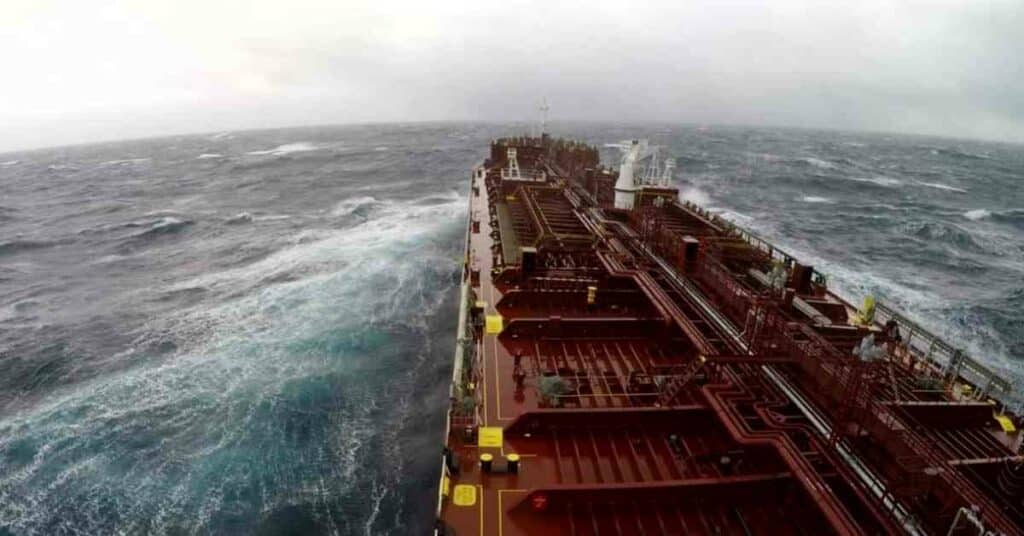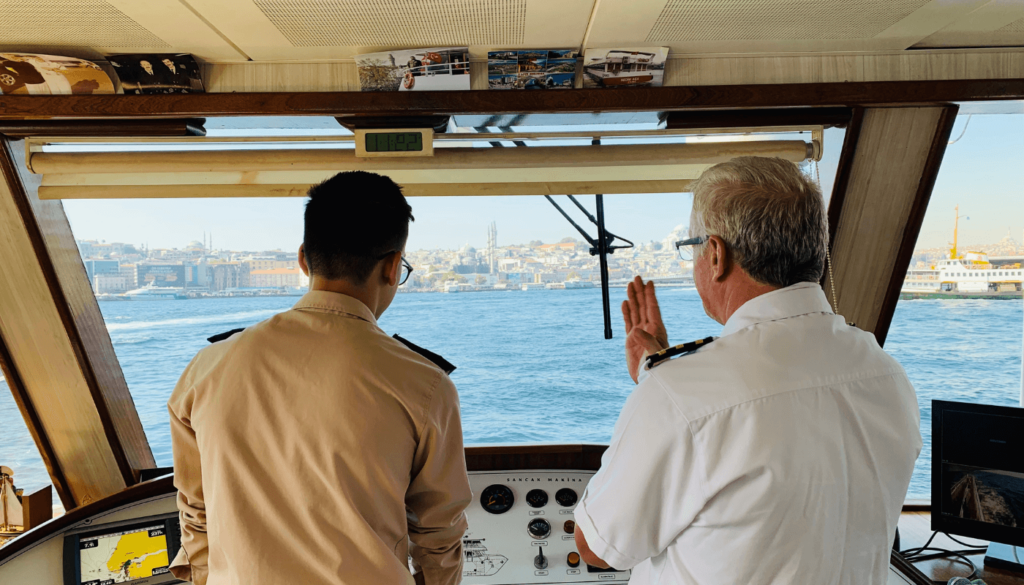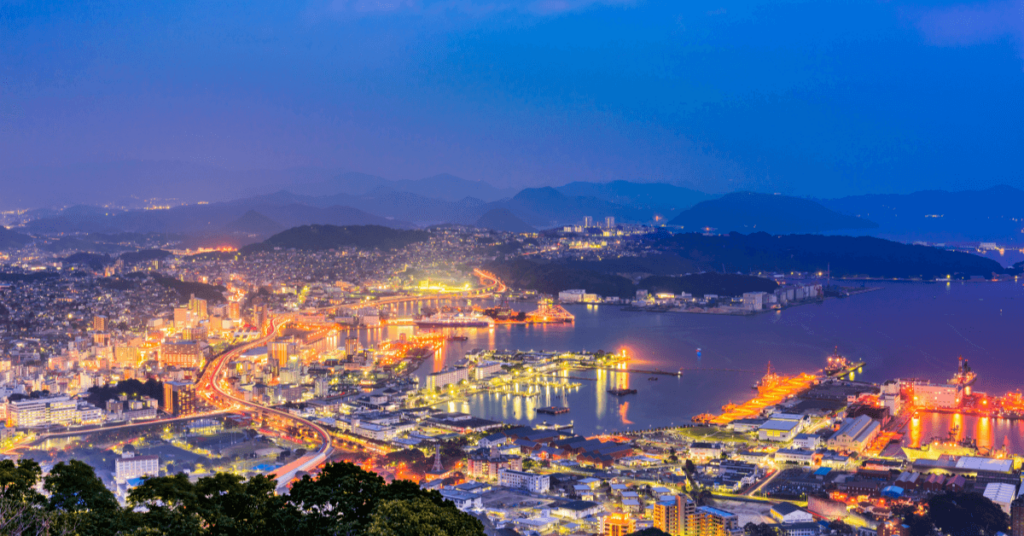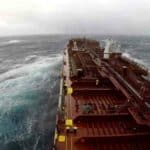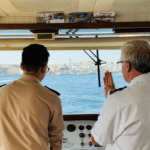10 Major Ports On The Red Sea
The Red Sea is linked to the Suez Canal, making it one of the world’s busiest shipping lanes, providing an alternative to the route around the Cape Of Good Hope.
It lies amidst Asia and Africa and separates the Middle East, the Far East, and Europe and Asia. The Red Sea region is rich in oil and precious metal resources.
It also serves as a natural border between Africa’s east coast and the west coast of the Arabian Peninsula. The Red Sea is a vital route for oil transportation through Bab-al Mandeb Strait in the south to Suez Canal in the north.
Hence, the Red Sea coastline is dotted with many big and busy ports. Let us look at the 10 major ports of the Red Sea.
1. Jeddah Islamic Port, Saudi Arabia
Jeddah Port lies on the coast of the Red Sea and functions as the primary port of Saudi Arabia. It is strategically located along the shipping lane connecting the east and the west through the Suez Canal.
It handles 56% of the nation’s total seaborne tonnage and 67% of all imported food. Jeddah Port is the second biggest and busiest facility in the Arab World.
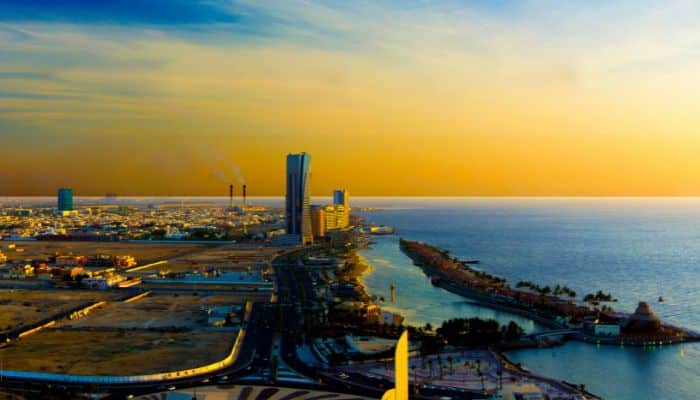
It supports the commercial centres of the country. It has specialised terminals, such as two container terminals with a 7.5 million TEUs capacity. It also has an integrated logistics space offering bonded store and re-export facility.
The port has two general cargo terminals, two berths dedicated to ship repairs, livestock berths accommodating 7 million heads annually, RORO terminals, Bulk grain terminals, grain, rice and flour mills, and passenger terminals.
With 62 berths, the port handles containers, general cargo, livestock, grains and vehicles.
Around 52,000,000 tonnes of cargo, 4,000,000 TEU and 275,700 passengers are handled annually at Jeddah Port.
2. Port of Sudan, Sudan
Port Sudan is situated in the western part of the southern Red Sea. Also called the Shaikh Barguth Port, it is the main port of Sudan, divided into three areas- East Town, West Town and South Town and has facilities on both sides of the inlet stretching northwest.
The port is well-sheltered, and entry and exit from the port are quite smooth.
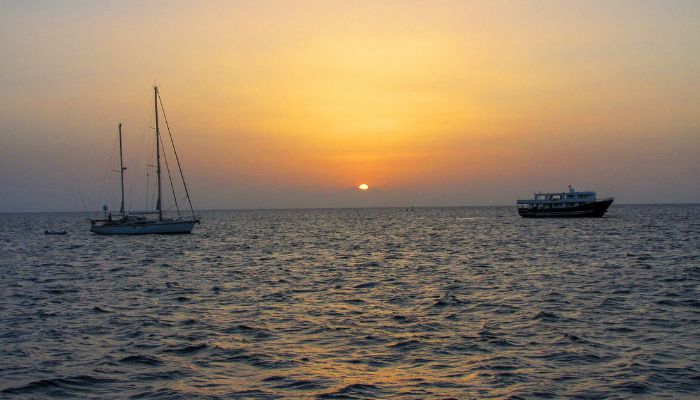
The North Port lies on the eastern side of the harbour. Berths 1-13 deal with general cargo. The South Port with berths 15-19 accommodates containers, cereals, RORO, bulk and petroleum.
The Green Port/ El-Alhadar lies on the southeastern side of the harbour and deals with dry bulk.
There is also the El Khair Oil Terminal, an offshore facility with a single berth, approximately 1.5 nautical miles southeast of the port’s main entrance. It was constructed for the import and export of LPG and petroleum products.
Approximately 8,600,000 tonnes of cargo and 431,000 TEUs are handled annually here.
3. Port of Djibouti, Djibouti
Djibouti Port lies at the southern entrance to the Red Sea. It is a key port for the transhipment of Ethiopian cargoes. Main exports comprise coffee, beans and pulses, oilseeds and oil cakes, skins and hides, while most imports include manufactured items.
The new port area of Doraleh is two nautical miles west of Djibouti and has a two-berth oil terminal on a ‘T’ Jetty. This oil terminal can accommodate ships with an LOA of 244 m and a draught of 17 m, weighing around 80,000 DWT.
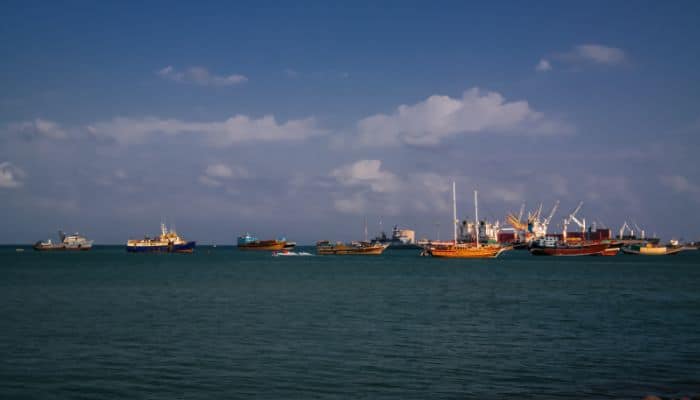
The Doraleh Container Terminal’s phase I is complete, and it can accommodate two large container ships simultaneously, with a maximum draught of 18 m.
Djibouti also has a free port zone spanning 14 ha. Approximately 5,816,000 tonnes of cargo and 293,000 TEU are handled annually here.
4. Port of Massawa, Eritrea
The port city of Massawa lies on the Red Sea at the northern end of Zula Gulf, beside the Dahlak Archipelago. It has a long history of seafaring going back many centuries. It is also one of the hottest coastal cities across the globe.
Massawa Port lies on the western bank of the southern Red Sea. It has six quays for general cargo ships and two terminals for tanker vessels.
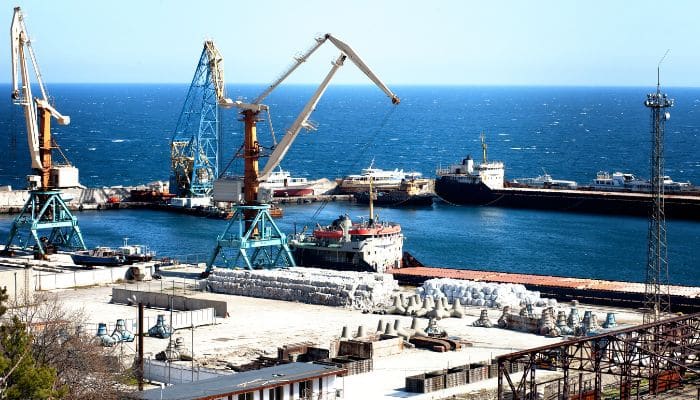
Main exports are fruit and vegetable, linseed, oil, meat, hides, and salt, while imports comprise cotton, silk, petroleum products, construction materials etc.
It was the biggest and safest facility on the eastern coast of Africa but suffered the consequences of war. However, it is being rebuilt and expanded.
Massawa also serves as the departure point for ferries to Dahlak Islands and other diving expeditions.
Approximately 340 vessels and 826,000 tonnes of cargo pass through this port annually.
5. Yanbu Commercial Port, Saudi Arabia
This port lies between Jeddah Islamic Port and King Fahad Industrial Port to the south and Dhuba Port to the north. It is situated on the Red Sea coast around 12 nm northwest of Yanbu Industrial Port.
The port can be reached via a 1.8 km long approach channel. It has 12 berths which handle 13.5 million tonnes of cargo annually. It also has a dedicated passenger terminal capable of accommodating 1500 passengers and a general cargo terminal too.
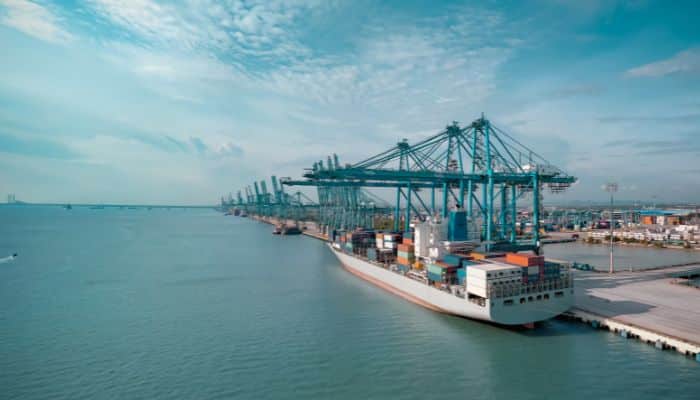
It is linked with the road network allowing connections to Makkah, Medina, and Qasim. Hence, it is the main gateway for inbound and outbound passengers and cargo.
Leading imports include fertilisers, white cement, chemicals, coal, petroleum and containerised cargo. Exports comprise clinker, zinc concentrates, used oil, petrochemicals etc.
6. Port of Safaga, Egypt
Safaga is a town on the Red Sea coast. It has several phosphate mines and is considered a famous therapeutic tourist centre. It was a merchant port for many years and has a small tourism industry specialising in scuba diving.
The port lies on the western coast of the Red Sea, between Hamrawein and Hurghada. It is sheltered by islands and reefs and functions as a phosphate export terminal. Ships enter the port in the morning when reefs are visible.
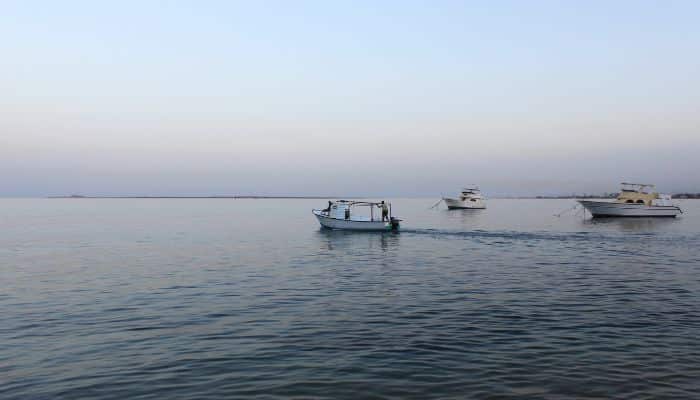
The main exports are phosphate ore, while imports include wheat, cement and alumina.
It has five berths, each specialising in a particular cargo type. Berth 1 accommodates grain carriers; Berth 2 handles passengers and general cargo; Berth 3 handles aluminium; and Berth 4 and 5 deal with rock, ground phosphate and MPP.
The port also has a grain silo with 100,000 tonnes capacity. This facility handles around 742 vessels, 3,870,000 tonnes of cargo, and 876,120 passengers annually.
7. Port of Eilat, Israel
Eilat Port lies at the head of the Gulf of Aqaba in the Red Sea. It handles most types of cargo and also offers repair services. It also has a Crude Oil Jetty operated by EAPC. An oil pipeline connects the Eilat in the Red Sea with the Ashkelon in the Mediterranean.
The oil jetty can accommodate tankers up to 300,000 DWT and has a depth of 30 m.
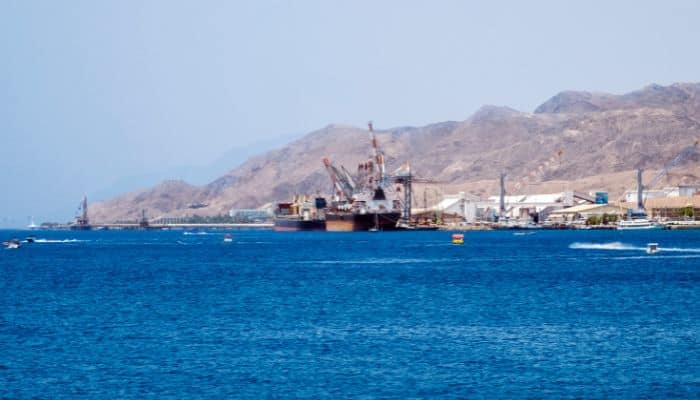
Berths 1-3 handle bulk, general cargo and containers. They are 528 m long and have a 12 m draft.
Major exports include phosphates, minerals, ores and potash, while imports comprise timber, foodstuff, vehicles and construction material.
The port has a seashore storage covering 160,000 m3. It also has 16 tanks with a 1.1 m3 capacity. The container storage space covers 28,000 m2, and for bulk, the port has 3 expansive sheds capable of storing 170,000 tonnes.
Approximately 2,100,000 tonnes of dry cargo, 70,000 cars and 50,000 TEUs pass through this port annually.
8. Port of Hodeidah, Yemen
Hodeidah Lies on the Red Sea coastline at the southern end of Khawr Katib, about 92 nm south of Yemen’s border with Saudi Arabia. It handles around 80% of humanitarian cargo, fuel and commercial products arriving in Yemen.
It has an ‘L’ shaped inner harbour, an oil terminal, a power station and a naval pier. The port can be reached through a 15 km channel which is 100 m wide and 9.4 m deep.
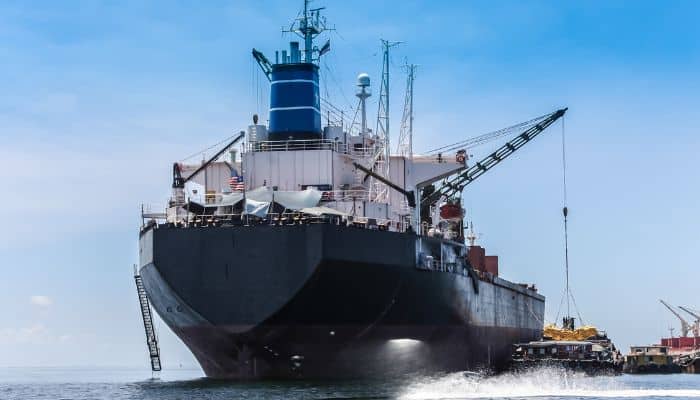
It exports coffee, skins and hides, sesame oil, and dried fruit, seeds, nuts, tobacco etc. Imports include flour, grains, rice, metal, hardware, timber, metals, petroleum and machinery.
Approximately 5,700,000 tonnes of cargo, including 1,000,000 tonnes of petroleum products, are handled at the port annually.
9. Port of Assab, Eritrea
Assab, or Aseb, is a coastal city located on the western coast of the Red Sea. Assab is the second biggest in Eritrea, the first being Massawa.
It serves Ethiopia, and 95% of the cargo the port handles is destined for Ethiopia.
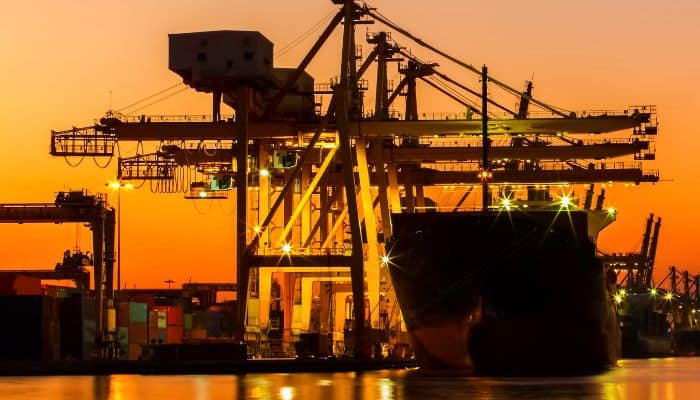
The total port area is around 890,000 m2, of which 45% is the sheltered storage space.
The harbour has seven berths for dry cargo vessels, 1 RORO ship and 3 oil terminals.
The main exports are linseed, neuk seeds, cereals, and dry fish. Imports comprise crude oil, refined products, general goods, machinery, transport materials, and cement.
Approximately 1,200,000 tonnes of dry cargo, 32,000 TEU and 1,300,000 tonnes of liquid cargo are handled at the port annually.
10. Port of Aden, Yemen
Port of Aden is situated on the southern coast of Yemen, in the Gulf of Aden, about 95 nautical miles east of the Bab al Mandeb strait, at the southern entrance to the Red Sea.
It is protected from the northeast and southwest monsoons by the hills and along the northern border by land, allowing it to operate without restrictions throughout the year.
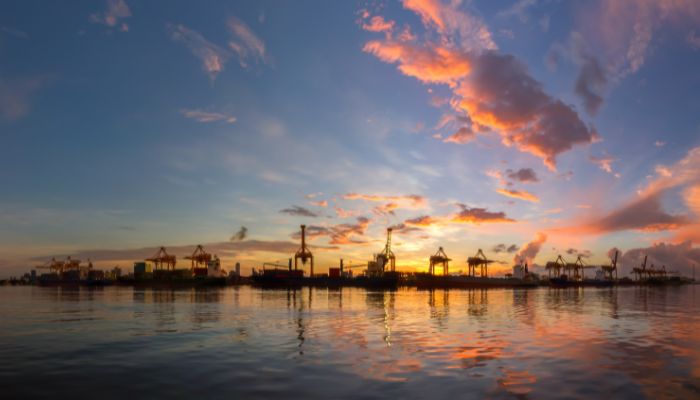
The port consists of an Outer Harbour, offering anchorage areas, the Oil Harbour at Little Aden on the west side of the harbour, and an Inner Harbour to the east.
Inner Habour has 9 berths and 3 berths for bunkering with depths ranging from 6m to 11.9 m. On the northern side of the Inner Harbour lies the Aden Container Terminal which provides 700 m of quays with a 16 m depth.
On the eastern side is the Ma’alla Terminal, with 4 berths handling containers, general cargo, bulk and RORO. Near this terminal are the Home Trade Quay, a fisheries harbour, and a ship repair yard with a floating dock.
The port exports refined oil products, frozen fish, manufactured items, scrap steel, flour, salt etc. Imports include bulk, foodstuff, lubricants, vehicles, livestock, construction material etc.
Approximately 2,000 vessels and 15,600,000 tonnes of cargo, including 380,000 TEUs, are handled annually at this port.
You might also like to read-
- 10 Major Ports On The Great Lakes
- 10 Biggest River Ports In The World
- 10 Major Ports In Canada
- 10 Largest Natural Ports
- 10 Major Ports In The Caribbean
Disclaimer :
The information contained in this website is for general information purposes only. While we endeavour to keep the information up to date and correct, we make no representations or warranties of any kind, express or implied, about the completeness, accuracy, reliability, suitability or availability with respect to the website or the information, products, services, or related graphics contained on the website for any purpose. Any reliance you place on such information is therefore strictly at your own risk.
In no event will we be liable for any loss or damage including without limitation, indirect or consequential loss or damage, or any loss or damage whatsoever arising from loss of data or profits arising out of, or in connection with, the use of this website.
Do you have info to share with us ? Suggest a correction
Disclaimer :
The information contained in this website is for general information purposes only. While we endeavour to keep the information up to date and correct, we make no representations or warranties of any kind, express or implied, about the completeness, accuracy, reliability, suitability or availability with respect to the website or the information, products, services, or related graphics contained on the website for any purpose. Any reliance you place on such information is therefore strictly at your own risk.
In no event will we be liable for any loss or damage including without limitation, indirect or consequential loss or damage, or any loss or damage whatsoever arising from loss of data or profits arising out of, or in connection with, the use of this website.

About Author
Zahra is an alumna of Miranda House, University of Delhi. She is an avid writer, possessing immaculate research and editing skills. Author of several academic papers, she has also worked as a freelance writer, producing many technical, creative and marketing pieces. A true aesthete at heart, she loves books a little more than anything else.
Latest Maritime Knowledge Articles You Would Like:
Daily Maritime News, Straight To Your Inbox
Sign Up To Get Daily Newsletters
Join over 60k+ people who read our daily newsletters
By subscribing, you agree to our Privacy Policy and may receive occasional deal communications; you can unsubscribe anytime.



